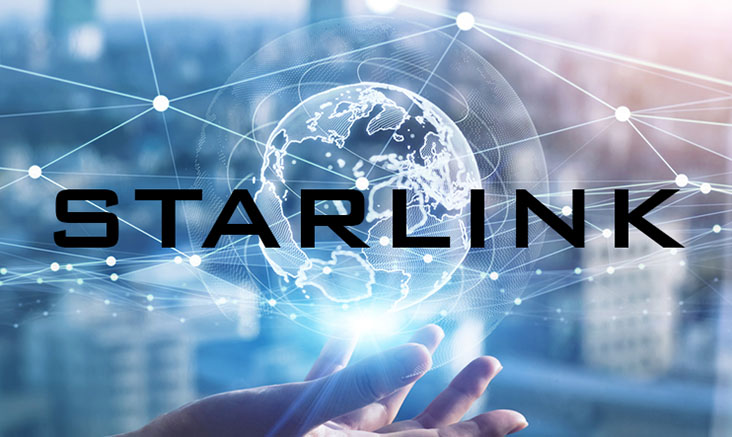At this point do I even need to explain what Starlink is? It’s revolutionized the way that people connect to the internet when they’re away from major cities. It’s still not perfect compared to traditional fiber internet or even cellular, but when those options aren’t there, Starlink can definitely fill the need and fill it well.
Why Starlink is brilliant
Starlink, in fact all low-earth-orbit internet systems, are a brilliant combination of two technologies. Traditional satellite internet has been around for decades. It’s really not terribly different from any other sort of satellite communication. You have a fixed satellite dish that sends information up and pulls information down. This was a pretty brilliant idea in the 1990s but let’s be honest, it’s pretty normal now. Traditional satellite internet has improved a lot since those days thanks to data compression and predictive caching, but it still suffers from two problems:
- The satellite is always going to be at least 22,000 miles away. That’s far enough away that the speed of light is going to actually cause your data to slow down.
- The average life of a satellite itself is 7-10 years, meaning what seemed awesome one year is going to seem pretty mild ten years later.
Low-earth-orbit systems solve both of these problems by taking the model created for cell phones and applying it to satellites. What do I mean?
- Cell providers are used to swapping out equipment every couple of years as standards change. Low-earth-orbit satellites stay up there only a short period of time and then burn up. They’re fairly cheap to build and launch so that’s ok with everyone.
- In cell phones, you move and the towers stay stationary. In low-earth-orbit internet, it’s the satellites that move, whether or not you’re also moving. But it’s the same idea. As you get too far from one satellite, another one automatically takes over.
By combining these technologies, you have a massive number of inexpensive satellites that are only about 350 miles away compared to 22,000 for traditional satellite internet. That means you get snappy response times. It costs less to put a satellite up in that orbit, and it’s potentially less dangerous when it does come back to earth.
Why Starlink is different from traditional fiber or cellular internet
No matter what, Starlink is never going to be as instant as fiber-based internet or internet off your cell phone. Land-based internet is supported by a massive infrastructure that took over 100 years to build. Maybe Starlink will be incredibly awesome in 100 years but it’s still in that early phase where things are evolving rapidly. Prices are changing, equipment is changing, and service levels are changing.
If you sign up for home internet or a cell phone plan, you know what you’re getting. Chances are the equipment you get today will work for years to come. You may choose to upgrade it, but it would still work even if you didn’t. For example, pretty much every cell phone made since 2012 will still work unless the provider it worked with has gone out of business.
Starlink isn’t there yet. It will be, but it’s not yet. If you’ve had Starlink since the very beginning, you’ve had to swap out equipment at least once, possibly twice in that short time. You need to know that if you’re getting into Starlink, you may need to upgrade again sooner than you expect. That shouldn’t stop you from jumping into this technology, it’s just something to budget for.
How RV Starlink is different
The basic Starlink kit for home is easy to install and configure yourself. If you have an RV, you might want to have someone permanently mount the antenna to the RV. After all, the last thing you’d want is to have it fly off while driving. Be prepared to pay more for that antenna, too. Yes you can get an antenna similar to the one you get at home, and the cost will be the same. But you’ll want an antenna that works while you’re driving. It’s larger and more costly.
When you’re using Starlink at home, you’ll get pretty much the same service level no matter what time it is. But, when you’re moving from place to place, you might find that speeds vary… a lot. Believe it or not, speeds will generally be better when you’re far away from the modern world. When you’re close to a major city, there’s a better chance that other people have Starlink there, too. There’s only so much capacity to go around, and if you’re sharing it with 1,000 other people you’re going to see slower speeds.
You’ll also have to consider the power that Starlink uses. According to sources on the internet, the larger mobile Starlink antenna uses 2kWh per day. If you’re relying on solar or battery power, you’ll need to budget for that, as well as potentially as much as 3 more kWh per day for a laptop. Phones and tablets will use significantly less. You can get wattage information on the device you’re using and multiply the number of watts used by 24 to get the number of watthours you’d need if you used the device 24 hours a day.
Best practices for using Starlink while parked
While you’re moving, you’re in a constantly changing environment. Like cell signals, your Starlink signals will get better and worse depending on where you are. However, when you settle in, you’ll want to choose a spot that makes sense for you and for your Starlink system. Here are a few tips you’ll want to consider:
- Choose your location: You’ll want a completely clear view of the sky. Don’t hobble your Starlink system by parking under a tree or near a building.
- Set expectations: You will generally get slower service when you’re nearer to an urban area.
- Know your power needs: if you’re not connecting to a power source, you’ll need to make sure you have enough power for the Starlink system and the device as well.
Most importantly, you need to work with a Starlink dealer who understands the needs of RVers. This is still fairly new technology and there are changes to plans and equipment fairly often. Signal Connect has been working with satellite technology for over 20 years. We’re the experts in the field!
Call Signal Connect to get started on the road to Starlink in your RV. The number is 888-233-7563. If it’s after hours, fill out the form below. We’ll get right back to you!





